Lahandi Baskoro's Blog, page 16
October 16, 2019
Performance and safety of heat transfer oil boilers
1. Strictly operate according to the heating curve.
2. The pressure difference is not stable and punctual shall not be put into use.
3. When the heat transfer oil boiler is stopped, the hot oil circulation pump can be stopped when the oil temperature drops below 80 degrees Celsius.
4. Ensure high thermal oil circulation during high temperature conditions.
5. During normal operation, the heat transfer oil in the high level tank adheres to the high liquid level, and the heat transfer oil in the oil storage tank should be at the low liquid level.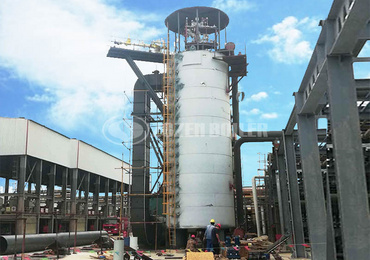
6. The oil temperature should not exceed the allowable operating temperature of the heat transfer oil.
7. Do not flush the furnace with water when the furnace is shut down.
8. Different types of heat transfer oil should not be mixed.
9. The vent of the oil storage tank should be connected to the safe area.
10. The initial heating rate must be based on the heating curve.
11. Before starting the blower, first open the fan, and stop the blower before stopping the fan.
12. The heat transfer oil boiler room should be equipped with electrical and oil fire-fighting equipment.
October 15, 2019
Heat transfer oil furnace heat transfer oil consumption calculation
Heat-conducting oil furnace, this is a specific type of boiler, but also a website product and keywords, so for us all, we need to have a comprehensive understanding and in-depth understanding of this kind of boiler, so that we can know what it is and how to correct it. Use it reasonably, and you can also increase your expertise in this area.
1. Does the correct choice when purchasing a heat transfer oil furnace bring some benefits?
This question, if the answer is from a professional point of view, that is, the correct choice for the product selection of the heat transfer oil furnace can bring some benefits, such as avoiding the use of the purchased products and waste of products. Problems and avoiding economic losses. In addition, it is also possible to achieve the intended use through the normal use of the product, and to obtain the intended use effect.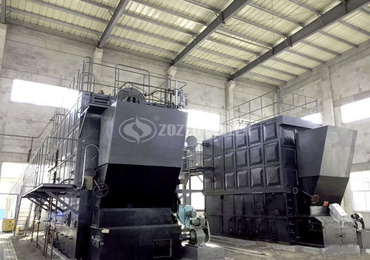
2. Is the amount of heat transfer oil important in the heat transfer oil furnace? How to calculate?
In the heat transfer oil furnace, the amount of heat transfer oil is an important aspect, so it is certain that the answer to this question is, because if the exact amount of heat transfer oil cannot be obtained, it will affect the normality of the heat transfer oil furnace. Work and use will also have some adverse effects on the heat transfer oil. In terms of calculation, it is mainly to calculate the volume of the tube, so the tube diameter and tube length can be known.
3. Is the cleaning of the pipeline in the heat transfer oil furnace to be taken seriously and carried out?
The cleaning of the pipeline in the heat-conducting oil furnace is to be taken seriously and carried out because it is an important task and cannot be treated and carried out. Otherwise, it will affect the normal operation and use of the boiler and the effect of the boiler. In the pipeline cleaning, generally two measures can be taken. One is to discharge the heat-conducting oil to fill the cleaning agent at low temperature circulation to clean the pipeline, and the other is to add a certain proportion of cleaning agent in the boiler system to make it normal in the system. Looping, this can also achieve the goal.
4.12 million kcal thermal oil furnace, which is a few tons of boiler? Is the product development of the heat transfer oil furnace important?
The 1.2 million kcal thermal oil furnace, from a professional point of view, is a 2 ton boiler, that is, the thermal oil furnace is 2 tons in tonnage. Product development of thermal oil furnaces is an important task for its manufacturers and is also an important aspect of this product.
October 11, 2019
Gas steam boiler scale cleaning
When a gas steam boiler is operating, a series of chemical and physical reactions take place in the furnace. During use, the heated surface will form a hard and dense scale, which directly leads to a decrease in the heat exchange efficiency of the boiler. The corrosive effect of fouling will result in reduced heat absorption of the gas-fired boiler of the gas boiler, thereby reducing thermal efficiency and wasting input costs.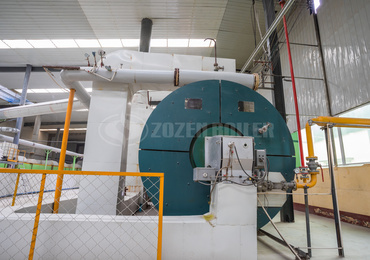
Another need to clean up the scale is to keep the boiler running for a long time. The thermal conductivity of scale is only one percent of steel. Once the surface is soiled by the hot surface, the heat transfer effect is hindered. In order to maintain a certain output power of the boiler during use, the temperature on the combustion side must be increased. The temperature rise of the gas boiler furnace outlet will increase the loss of the gas boiler, and the fouling of the water wall of the equipment will effectively reduce the heat transfer effect, which may cause the temperature of the water wall to rise, resulting in the water wall rupture.
Cleaning the boiler has become even more important. Efficient, environmentally friendly, non-corrosive cleaners can be used during the cleaning process, which will expose the tubes of the equipment to the original metallic color and reduce the effects of scale. Secondly, after the gas boiler is ignited, it is necessary to observe the change of the furnace temperature and the main steam temperature. When the main steam pressure rises, if the boiler is ignited, the speed at which the smoke temperature rises will slow down or not rise, and immediately check the ignition of the oil gun.
October 10, 2019
Low nitrogen gas boiler renovation policy
Ultra-low nitrogen boiler Beijing operation site
The modified gas boiler has a nitrogen oxide content of less than 30 mg/m3.
This type of gas boiler belongs to ultra-low nitrogen emission, detailed transformation plan: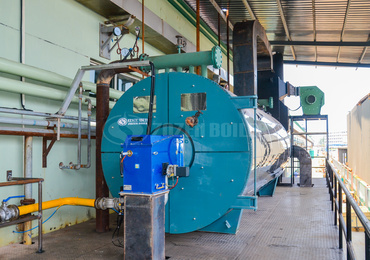
1, replace the burner
Replace ordinary burners with ultra-low nitrogen burners to optimize the combustion environment of the fuel to reduce nitrogen oxides
2. Performing flue gas recycling transformation
Opening in the flue of the existing gas boiler, re-connecting a flue, and passing the flue gas into the burner for combustion
Note: The opening position of the tail of the gas boiler needs to be analyzed and measured by professional instruments to select the best opening position.
The modified gas boiler has a nitrogen oxide content of less than 80 mg/m3.
This type of low-nitrogen gas boiler can be retrofitted with only a low-nitrogen burner.
The furnace size and boiler length of the above two emission standards for low-nitrogen gas boilers must meet the requirements of low nitrogen. If the size does not meet the requirements, the modification of low-nitrogen gas boilers is not recommended. The main reasons are as follows:
1. The effect of the modified boiler cannot be guaranteed
2, thermal efficiency can not be guaranteed
October 8, 2019
Basic knowledge of water for gas steam boilers
Doing a good job of water quality is one of the important links to ensure the safe and economic operation of boilers. Because the combustion temperature of oil and gas is high. Most of the fuel and gas boilers (especially imported fuel gas boilers) are small in size and compact in structure, and have high requirements on water quality. If the water treatment is not well done, boiler scaling and corrosion will be formed, not only the fuel but also the fuel. Causes blockages, squibs, etc., and in severe cases, will also form the largest economic loss of boiler scrap. Therefore, boilers for fuel and natural gas need to carefully handle boiler water treatment.
Basic knowledge of boiler water
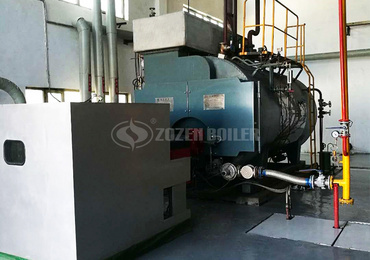
1. Indications for damage to boilers in natural water and boiler water treatment
There are many impurities in natural water, and the main factors affecting the boiler are suspended matter, colloidal matter and dissolved matter.
Suspended matter and cavity materials are composed of mud sand, animal and plant remains and some low molecular aggregates, which are the primary factors that make water turbid. If these impurities enter the ion exchanger, it will contaminate the AC resin and affect the quality of the water. If it enters the boiler directly, it will easily deteriorate the quality of the steam, and it will easily accumulate into mud and block the pipe, causing the metal to be damaged due to overheating. Suspended and colloidal materials can be removed by pretreatment.
Dissolved matter primarily refers to salts and certain gases dissolved in water. Natural water, even in seemingly pure tap water, contains various dissolved salts, among which calcium and magnesium salts. That is, the hardness material is the primary source of boiler fouling. Because scale damages the boiler extremely, removing the hardness and avoiding scaling is the primary task of boiler water treatment, and can be reached by chemical treatment outside the pot or dosing in the pot.
The main factors affecting the fuel gas boiler equipment in dissolved gas are oxygen and carbon dioxide, which will cause oxygen corrosion and acid corrosion to the boiler. Together with oxygen and hydrogen ions, it is still a highly effective depolarizer, which will accelerate the electrochemical. Corrosion is one of the important factors in the corrosion of boilers. Dissolved oxygen can be removed by means of a deaerator or by participating in a restorative medicine. With regard to carbon dioxide, it is only necessary to adhere to the pH and alkalinity of the pot water to eliminate its effects.
In some other areas, the alkalinity of the water source is relatively high. After the fuel gas-fired boiler is incinerated and heated, the alkalinity of the pot water will become higher and higher. After reaching a certain concentration, it will foam on the transpiration surface, affecting the steam quality; Under certain conditions, if the alkalinity is too high, alkaline corrosion such as caustic embrittlement at the stress collecting portion may occur. Therefore, the alkalinity of the water quality needs to be reduced. In addition, the dissolved solid content is too high, it will also affect the quality of steam, and even cause steam and water to rise. It should be handled by reasonable drainage.
The intention of the boiler water treatment is to remove harmful impurities, avoid boiler scaling and corrosion, ensure steam quality and ensure safe and economic operation of the boiler.
September 29, 2019
Characteristics of organic heat carrier boiler
The heat transfer oil has the properties of resistance to thermal cracking and chemical oxidation, good heat transfer efficiency, fast heat dissipation and good thermal stability. As a heat transfer medium for industrial oils, heat transfer oil has the following characteristics: Under almost normal pressure conditions, high operating temperatures can be obtained. That is, the operating pressure and safety requirements of the high-temperature heating system can be greatly reduced, and the reliability of the system and equipment can be improved; the process requirements of heating and cooling at different temperatures can be met in a wider temperature range, or the same system can be used in the same system. The heat transfer oil simultaneously achieves the process requirements of high temperature heating and low temperature cooling. That is, the complexity of the system and operation can be reduced; the water treatment system and equipment are omitted, the thermal efficiency of the system is improved, and the maintenance workload of equipment and pipelines is reduced. That is, the initial investment and operating cost of the heating system can be reduced; in the case of a system leakage caused by an accident, the heat transfer oil may be combusted when it meets an open flame, which is a problem in the heat transfer oil system compared with the water vapor system. However, in the absence of leakage, because the heat transfer oil system operates under low pressure conditions, its operational safety is higher than that of water and steam systems. Compared with molten salt of another type of high-temperature heat transfer medium, the heat transfer oil has an absolute advantage over the heat transfer oil in terms of the price and service life of the heat transfer medium at an operating temperature of 400 ° C or higher, but is otherwise in other respects. Obvious disadvantage, especially in terms of the complexity of system operation.
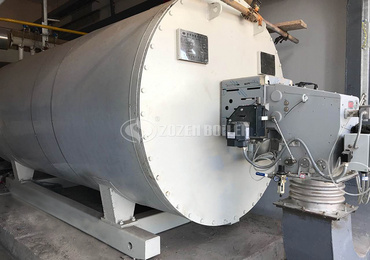
It is chemically stable and is not as easy to burn as light oil. From a usage and security perspective, its main features are
1. Within the allowable temperature range, the thermal stability is better, the coking is less, and the service life is longer.
2. Good thermal conductivity, flowability and pumpability in the allowable temperature range.
3. Low toxicity, no odor, no corrosion equipment, little impact on the environment.
4. The freezing point is lower, the boiling point is higher, and the content of low boiling point components is less. In the allowable temperature range, the vapor pressure is not high and the evaporation loss is small.
5. When the temperature is higher than 70 °C, it will be strongly oxidized when it is in contact with air. The heated working system needs to be sealed, and only it is allowed to contact with air at a temperature below 70 °C.
6. The volume expansion is significant after heating, and the expansion rate is much larger than water. The temperature rises to 100 ° C, and the volume expansion rate can reach 8% to 10%.
7. Cracking or condensation occurs during overheating, coking or carbon deposits in containers, pipes.
8. When mixed with water or low boiling components, the vapor pressure will increase significantly after heating.
9. The flash point, ignition point and spontaneous ignition point are both high, and will not ignite when the temperature is allowed and sealed.
10. According to the area where the user lives and the working environment of the equipment, it is recommended to select the heat transfer oil with suitable low temperature performance.
September 27, 2019
Organic heat carrier heating boiler for printing and dyeing industry
The printing and dyeing line transforms steam into organic heat carrier to save energy and greatly reduce production cost. The organic heat carrier furnace has many high-temperature, indirect heating, safe and reliable heating characteristics, which can meet many industrial production requirements. Recently, such as Shaoxing Yongfeng, Xiangshan Zhejiang Giant Eagle Group and Ningbo Juying Katie Garment Co., Ltd., after technical research, boldly transformed the dyeing machine steam heating into organic heat carrier heating and achieved gratifying results.
The system overcomes two problems of steam heating. One is that the steam entering the cylindrical casing is directly discharged from the outlet of the simple casing after heating the heat exchange tube, and can only be used once, not only heat. The utilization rate is low (usually only about 30%) and it is a serious waste of water resources. The second is waste of energy and high cost of use. For example, dyeing one ton of polyester cotton and heating the dyeing liquid with steam requires 10~ 12 tons of steam, while using heat-conducting oil to heat the dyeing liquid, only consume 1000-1200 kg of coal, and use heat-conducting oil to heat energy to save 30~50%, greatly reducing production costs.
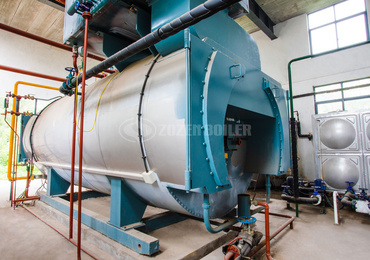
The dyeing liquid utilizes an organic heat carrier {heat-conducting oil} heating device in which the inlet and the outlet on the cylindrical casing are respectively communicated with the oil-out n and the oil inlet of the heat-conducting oil boiler through the oil pipe, thereby making the heat-conducting oil and the cylindrical casing Form a closed circulating oil path. In the heating process, in addition to the heat conduction of the equipment itself, there is no other loss of electricity, and the heat transfer oil can be recycled without loss. The utilization rate is close to 100%, and the heat transfer oil is used for replacement. The medium dyeing liquid in the heat pipe is heated, so that the heating process of the dyeing liquid in the heat exchange tube is relatively stable, thereby prolonging the life of the equipment.
The dyeing machine heat conduction oil heating device is mainly connected to the circulation pump inlet from the dyeing tank by the dyeing liquid passage, the filter is installed at the outlet of the circulation pump, the cloth distribution frame is installed on the dyeing tank, and the paint barrel and the liquid level meter are respectively connected to the dyeing liquid. On the channel, the heater and condenser are installed on the dyeing tank, the regulating valve is installed in the middle of the filter, heating and condenser, the connecting tube is fixed on the dyeing tank by flange, and the relevant valve, platinum thermal resistance, pressure gauge, etc. are installed. . It can be recycled and used without loss. Its utilization rate is close to 100%. The heat transfer oil is used to heat the medium dyeing liquid in the heat exchange tube, so that the heating process of the dyeing liquid in the heat exchange tube is relatively stable, thereby prolonging the life of the equipment. The dyeing machine is mainly connected to the circulation pump inlet from the dyeing tank by using the dyeing liquid passage. The filter is installed on the outlet of the circulation pump, and the discharge rack is installed on the dyeing tank. The paint bucket and the liquid level gauge are respectively connected to the dyeing liquid passage and heated. The condenser and the condenser are installed on the dyeing tank, the regulating valve is installed in the middle of the filter, the heating and the condenser, the connecting pipe is fixed on the dyeing tank by the flange, and the related valve, the platinum thermal resistance, the pressure gauge and the like are installed.
September 24, 2019
Gas hot water boiler supply hot water unit
A gas-fired hot water boiler is a device for heating or supplying hot water in winter.The boiler will run for a long time.Scaling and rust are inevitable in the process of use.The main cause of scale formation in gas boilers is that water has a hard component and is continuously evaporated and concentrated through high temperature and high pressure.
What is the cause of scale in gas-fired hot water boilers?During operation, a series of chemical and physical reactions are produced in the furnace during operation, and a hard and dense oxide skin is effectively formed on the heating surface during operation, which directly leads to the decrease of heat exchange efficiency.Due to corrosion factors under scale, the boiler’s water-cooled fireplace will absorb less heat.The furnace outlet temperature of the gas boiler increases, which will increase the loss of the boiler.Scale on the water-cooled wall of the equipment can effectively reduce the heat transfer effect and may cause water cooling.The thermal conductivity of water – cooled wall gas boiler is only a few tenths of that of steel.When a surface is stained by a heated surface, the heat transfer effect is hindered.In order to maintain the appropriate boiler output during the process, the temperature on the fire side must be raised.The gas boiler can be cleaned with an effective, environmentally friendly non-corrosive cleaner during the cleaning process to expose the metal primary color of the equipment tube and reduce the influence of dirt and biological algae sludge.
In addition, the gas hot water boiler should pay attention to some other problems.For example, after ignition, it is necessary to observe the temperature of the furnace and the temperature of the main steam, and the pressure of the main steam increases, and the boiler is ignited.Check the current oil gun fire immediately after smoke temperature rises slowly or does not rise.
Boiler hot water pipe is too long
Hot water pipes for natural gas boilers should not be too long
Hot water pipes for natural gas boilers should not be too long.The natural gas boiler should be installed near the heat source and easy to install.The hot water pipe should not be too long.It should have good insulation.The pipe should be inclined from the hot water output end to the end.Water supply shall be equipped with control valves.In order to discharge gases, the chimney of the natural gas boiler should be extended outwards, and the outlet should be 1.5 ~ 2M higher than the boiler.

Natural gas boiler should be installed in the heat and easy to install.The hot water pipe should not be too long.It should have good insulation.The pipe should be inclined from the hot water output end to the end.Water supply shall be equipped with control valves.For the purpose of emission, the chimney of the natural gas boiler should be extended to the outside and the outlet should be 1.5 to 2M higher than the boiler.
Natural gas boiler power supply shall be equipped with auxiliary control switch, fuse and reliable protective grounding wire, 380v three-phase four-wire extension (or three-phase five-wire extension), 220v single-phase power supply and wiring standard as shown in the schedule..All wiring shall comply with the relevant national regulations.When the water quality used does not meet the requirements, water softening equipment should be used.Deep well water, water containing minerals and sediments, is strictly prohibited, especially in the sandy and mountainous areas of the north.
The power voltage of natural gas boiler must be controlled within 5%, otherwise it will affect the use effect.380v voltage must be three-phase five-wire power supply, and the neutral wire cannot be connected incorrectly.If the grounding of a natural gas boiler is related to the safety of use, a reliable grounding wire shall be installed for this purpose.The grounding wires should be stacked nearby with a depth of ≥1.5m. The grounding wire joints should be sintered on the grounding pile head.To prevent rust and moisture, the joints to be connected should be 100mm away from the ground.
September 19, 2019
Hot water boiler internal inspection and use preparation
Hot water boiler internal inspection and use preparation, furnace and flue inspection, boiler attachment inspection, automatic control system inspection, inspection of auxiliary equipment, inspection of combustion equipment, inspection of auxiliary heating surface, hot water boiler must be operated before operation To do some inspections, these inspections are not to be underestimated, and may have very serious consequences because of our neglect.
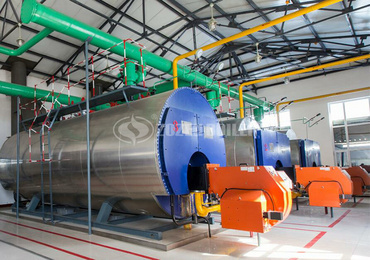
Therefore, we must guard against micro-duration, we must carefully check the following items before the hot water boiler is running.
1. Including the internal inspection and use preparation of the boiler.
2. Inspections in the furnace and flue, ash and debris in the furnace and flue should be removed. The regulating door of the air duct and the flue, the ram must be complete and tight, the switch is flexible, and the opening and closing instructions are accurate.
3. Check the boiler accessories to check whether the safety accessories are in good condition; whether the cocks are flexible and easy to use; all kinds of instruments and control devices should be complete, good and clean. After the inspection is passed, the pressure gauge cock should be in working condition.
4. Inspection of the automatic control system.
5. Inspection of attached equipment.
6. Check the burning equipment to check whether the combustion device is in good condition; for the mechanical transmission system, the coal conveying system, the exiting system is tested to be normal; the control box safety spring should be properly pressed and well lubricated; the coal gate plate indicator is correct. The eagle iron is neat and in good condition, the slab is complete and the movement is flexible.
7. Check the auxiliary heating surface and check whether the auxiliary equipment (induced draft fan, blower, water pump, etc.) is firmly connected; the V-belt is properly tightened; the lubricating oil should be good and sufficient; the cooling water is unblocked. After passing the inspection, install the safety shield, perform the test run separately, and pay attention to the current during idling.
Lahandi Baskoro's Blog



